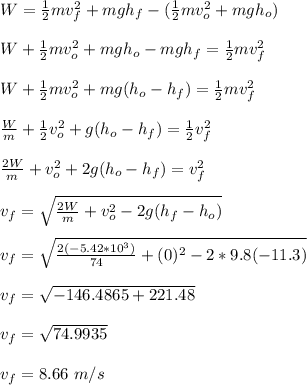
Physics, 19.06.2020 03:57 Cadenc4276
A student, starting from rest, slides down a water slide. On the way down, a kinetic frictional force (a nonconservative force) acts on her. The student has a mass of 74.0 kg, and the height of the water slide is 11.3 m. If the kinetic frictional force does -5.42 × 103 J of work, how fast is the student going at the bottom of the slide?

Answers: 1


Another question on Physics

Physics, 22.06.2019 11:30
While you are driving in the lane next to the curb on a multi-lane road the car on your left suddenly moves toward you lane. they are about toy crash into your front fender. you
Answers: 2


Physics, 23.06.2019 01:00
The amount of heat required to change liquid water to vapor at its boiling temperature is 2256 kj/kg. the amount of heat required to change liquid mercury to its vapor state at its boiling temperature is 295 kj/kg. one kg of each substance is currently at its boiling point. how will the amount of thermal energy required to change each substance from a liquid to a gas differ?
Answers: 3

Physics, 23.06.2019 02:40
The two metal spheres in the figure are connected by a metal wire with w switch in the middle. initially the switch is open. sphere 1, with the larger radius, i'd given a positive charge. sphere 2, with the smaller radius, is neutral. then the switch is closed. afterward, sphere 1 has charge q1, is at potential v1 and the electric field strength at its surface is e1. the values for sphere 2 are q2, v2, and e2. a. is v1 < ,> , or = to v2? explain. b. is q2 < , > , or = explain? c. is e1 < ,> ,or = to e2? explain?
Answers: 1
You know the right answer?
A student, starting from rest, slides down a water slide. On the way down, a kinetic frictional forc...
Questions

Mathematics, 25.11.2021 06:50





Chemistry, 25.11.2021 06:50




Business, 25.11.2021 06:50

Computers and Technology, 25.11.2021 06:50

English, 25.11.2021 06:50


Biology, 25.11.2021 06:50

Social Studies, 25.11.2021 06:50




Chemistry, 25.11.2021 06:50

Mathematics, 25.11.2021 06:50




